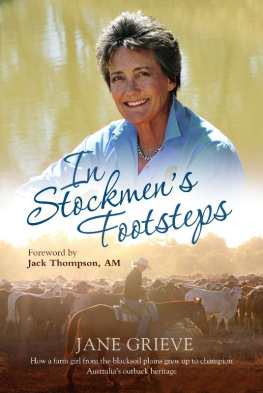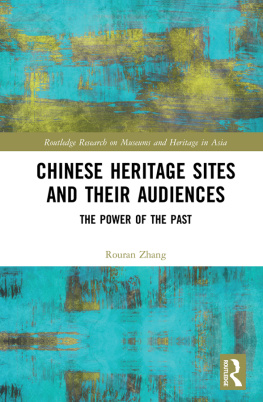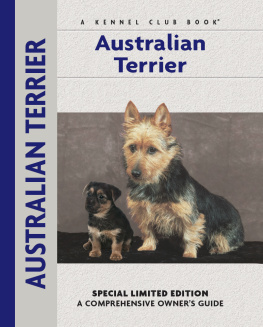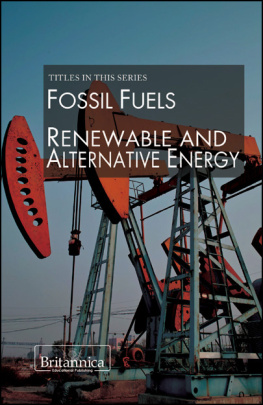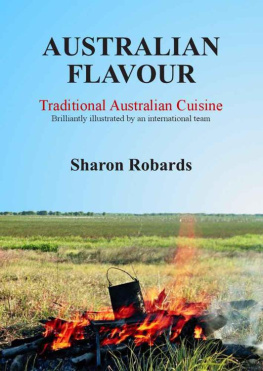Commonwealth of Australia 2012
All rights reserved. Except under the conditions described in the Australian Copyright Act 1968 and subsequent amendments, no part of this publication may be reproduced, stored in a retrieval system or transmitted in any form or by any means, electronic, mechanical, photocopying, recording, duplicating or otherwise, without the prior permission of the copyright owner. Contact CSIRO PUBLISHING for all permission requests.
National Library of Australia Cataloguing-in-Publication entry
Australian Heritage Council.
Australias fossil heritage : a catalogue of important Australian fossil sites /by the Australian Heritage Council.
9780643101777 (pbk.)
9780643101784 (epdf)
9780643102309 (epub)
Includes bibliographical references and index.
Paleontology Australia
Fossils Australia.
Natural history Australia.
Cultural property Protection Australia
560.450994
Published by
CSIRO PUBLISHING
150 Oxford Street (PO Box 1139)
Collingwood VIC 3066
Australia
Telephone: +61 3 9662 7666
Local call: 1300 788 000 (Australia only)
Fax: +61 3 9662 7555
Email: publishing.sales@csiro.au
Web site: www.publish.csiro.au
Contributors
New South Wales: Yong-Yi Zhen
Northern Territory: Peter Murray and Dirk Megirian
Queensland: Alex Cook, Robyne Leven (Lark Quarry entry)
South Australia: Dennis Rice with Jim Gehling, Liz Reed (Naracoorte entry)
Tasmania: Clive Calver, Max Banks, Patrick Bender, Jim Jago, Greg Jordan, Patrick Quilty, Andrew Rozefelds
Victoria: John Long, Tom Rich, David Holloway, Erich Fitzgerald
Western Australia: Mikael Siversson
Plant fossil sites: Raymond J. Carpenter and Robert S. Hill
Department of Sustainability, Environment, Water, Population and Communities: Kate OCallaghan, Leah Schwartz, Rachel Sanderson, Stephanie Russo, Tessa Bird, Ruth Donovan, Robyne Leven, Tania Laity and Kirsty Douglas
Editors: Alex Cook, John Magee, Karen Roberts, Kirsty Douglas, Kate OCallaghan and Rachel Sanderson
All images are Australian Government Department of Sustainability, Environment, Water, Population and Communities, Canberra or used with permission.
Cover image: Peter Schouten. Images in this catalogue by acclaimed palaeoartist Peter Schouten are inspired by Henry Thomas de la Beches Duria Antiquior or a more ancient Dorset (1830), an early and very famous dioramic representation of ancient life, a Jurassic scene based on fossils found on the Dorset coast. De la Beches images helped to establish a tradition of pictorial representation of scenes from the deep past ably realised by Schouten in his series of evocative dioramas.
Set in Adobe Century Schoolbook 9/12 and Century Gothic
Edited by Elaine Cochrane
Cover and text design by Andrew Weatherill
Typeset by Andrew Weatherill
Index by Russell Brooks
Printed in China by 1010 Printing International Ltd
CSIRO PUBLISHING publishes and distributes scientific, technical and health science books, magazines and journals from Australia to a worldwide audience and conducts these activities autonomously from the research activities of the Commonwealth Scientific and Industrial Research Organisation (CSIRO). The views expressed in this publication are those of the author(s) and do not necessarily represent those of, and should not be attributed to, the publisher or CSIRO.
Original print edition:
The paper this book is printed on is in accordance with the rules of the Forest Stewardship Council. The FSC promotes environmentally responsible, socially beneficial and economically viable management of the worlds forests.
Foreword
The Australian Heritage Council was formed in 2004 as an independent expert body to advise the Minister for the Environment on the listing, protection, promotion and management of heritage places.
As Chair of the Australian Heritage Council I have the privilege of overseeing Australias most prestigious heritage list, the National Heritage List. The National Heritage List captures critical moments in our development as a nation. It reflects the lives and times of many exceptional Australians; it also tells the stories of those places that reveal the richness of Australias extraordinarily diverse natural heritage. The National Heritage List was established to list places of outstanding heritage significance to Australia and includes natural, historic and Indigenous places.
I am honoured to introduce the publication of this inventory of Australias fossil heritage, which will make a valuable addition to our understanding of Australias natural heritage.
Australia has a wealth of fossil sites that includes some of the oldest fossils in the world. The information we learn from fossil sites helps us to piece together a national story about how Australias plants, animals and environments have transformed over many millions of years. Australias fossil history contributes to an understanding of past and present biodiversity and situates Australian biota and ecosystems in a global perspective.
This book makes a valuable contribution to cataloguing many of our most important fossil sites, and serves as a useful resource to draw from in determining those fossil sites that are of outstanding significance to Australia. What do I mean by outstanding? I mean sites that have fundamentally shifted our understanding of the development of Australias flora and fauna, or sites that illustrate incredible diversity of species, or act as a catalogue of different species over a great length of time, or sites that house exquisitely preserved specimens.
For example, the Ediacara fossil sites in South Australia record the first discovery of the fossilised remains of an entire community of soft-bodied creatures in such abundance anywhere in the world. Before their discoverer Reg Sprigg unearthed and interpreted the sites in 1946, scientists believed that only organisms with hard parts, such as shells or skeletons, could be preserved in the fossil record. As the oldest known evidence for complex multicellular organisms, these sites in the Ediacara Hills gave scientists a new understanding of the evolution of life on Earth, as well as a better understanding of how soft tissue can be preserved in the fossil record. In 2004, the International Union of Geological Sciences ratified the Ediacaran Period, the first new geological period in 120 years, and the only one named for a southern hemisphere site. The Ediacara fossil site in South Australia was added to the National Heritage List in 2007.
The Yea flora fossil site in Victoria [the Silurian Baragwanathia site] is an example of how a seemingly insignificant fossil site can reveal an important national story. Although first discovered in 1875, the significance of the Yea flora fossils was not realised until 60 years later, when they were studied by pioneering botanist Dr Isabel Cookson in 1935. Dr Cookson identified the remains as ancient vascular land plants, about 415 million years old and the oldest of their kind in the world. Her findings were internationally significant as they suggested that not only did complex land plants develop much earlier than previously thought, but that they also first evolved in the southern hemisphere. The Yea flora fossil site was added to the National Heritage List in 2007.



